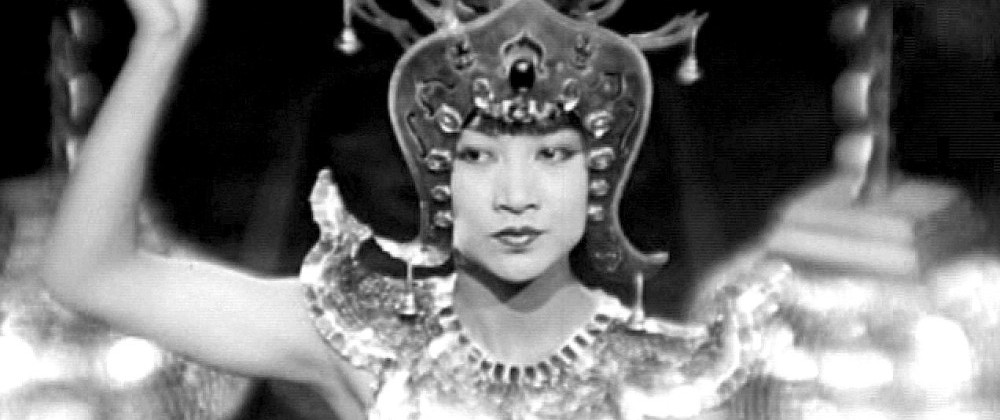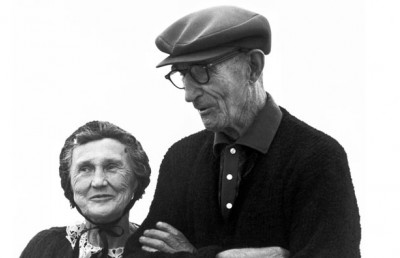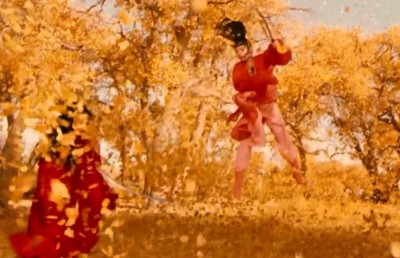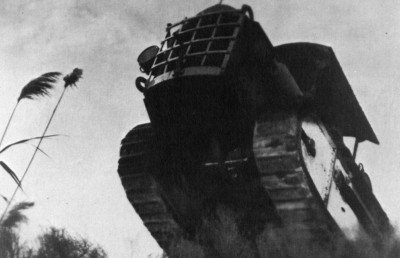From Yellow Peril to Yellow Fever
The Representation of Asians from Anna May Wong to Lucy Liu

“As your leader, I encourage from time to time and always in a respectful manner, to question my logic. If you’re unconvinced that a particular plan of action I’ve decided is the wisest, tell me so. But allow me to convince you. And I promise you, right here and now, no subject will ever be taboo, except of course, the subject that was just under discussion. The price you pay for bringing up my Chinese or American heritage as a negative is, I collect your fucking head.” (Lucy Lui as O-Ren Ishii in Kill Bill)
The above quote is a monologue delightfully delivered by Lucy Liu in Quentin Tarantino’s Kill Bill (2000). If Anna May Wong were still alive, she would have probably lobbied for Liu’s role as O-Ren Ishii, considering she was all for challenging the role/representation of Asians in film. The script speaks magnitudes about Asian Americans’ representation in cinema: that your superiors’ logistics must be questioned, that Asian Americans are still considered a taboo subject, and ultimately, that Asian American characters rip off people’s heads in films. In other words, and more specifically, Hollywood films have created and recycled a formulaic American Asian character that is far from truthful to the real social body.
Although the representation of Asian American males merits its own discussion, in the following brief essay I will explore the representation of female Asian characters in Hollywood films. In passing, however, one must note that Asian men have also been stereotyped in Hollywood film, often as the emasculated, impotent, no-gunpowder-needed type (Prasso 109). Foremost, one must acknowledge the pioneering critical work of Edward W. Said, who has theorized that the East was “Orientalized,” as “a Western style of dominating, restructuring, and having authority over the Orient (Said 3).” That is, the Occidental world invented an image/idea of Asia, the Middle East and North Africa by projecting dubious elements onto the Oriental Other to stave off the infiltration of Eastern culture into the West. According to Said Orientalism stems from imperialism, and that in an effort to maintain their (colonial) power the West created an essentialist, fallacious discourse of the East, which was nothing but their own invented version of the East. The Western philosophers whom Said challenges were thereby afraid of the foreign Other, i.e. they were xenophobes.
Xenophobia was largely a result of the influx of immigrants into the United States. The 1920 Hays Production Code reacted in its own xenophobic manner by prohibiting interracial relationships onscreen, a gesture which, like Orientalism, suppressed the racial Other through exclusionary and stereotypical imagery. Gina Marchetti further articulates this matter by looking at the romantic relationships of Asians in Hollywood narratives from the 1920s to early 1990s, which manifested this so-called “yellow peril.” She notes:
Rooted in medieval fears of Genghis Khan and Mongolian invasions of Europe, the yellow peril combines racist terror of alien cultures, sexual anxieties, and the belief that the West will be overpowered and enveloped by the irresistible, dark, occult forces of the East. Given that knowledge about Asia and Asians has been limited in Europe and America, much of this formulation necessarily rests on a fantasy that projects Euroamerican desires and dreads onto the alien other (Marchetti 2).
One may see the interconnections of Orientalism, xenophobia and, more specifically, yellow peril through this quote, in that they are all reactions/responses to colonialism and the West’s xenophobic perception of Asia. Marchetti’s basis for the mispresentation of Asians in Hollywood film is based on yellow peril. Indeed, one of her subjects, Anna May Wong, was highly subjected to Orientalist discourses.
Another writer who challenges/documents the role of the Asian, although in the more general context of Western arts, politics, and society, is Sheridan Prasso. Her book The Asian Mystique: Dragon Ladies, Geisha Girls and Our Fantasies of the Exotic Orient is like a follow-up to Said’s Orientalism, albeit less philosophical. From the title alone, one may note that her analysis of Asians is based on the West’s desired image of the Orient, “often depicted with fantasy-fueled feminine adjectives,” which contrasts Marchetti’s perilous image of the Orient (xii). One of the issues she addresses is the yellow fever phenomenon, which is the attraction that Caucasian or non-Asian males have towards Asians as fetish. A description of its origins follows:
The fetishization of all things Asian in popular culture –owing in part to the rise of Hong Kong cinema, with its commanding, action-oriented personalities; the ubiquity of female Asian American television-news anchors and fashion models in the U.S. media; Asian food faddism among many urban professionals; and the acceptance by young people of such imports as anime (Japanese animation)– seemingly has neutralized the more virulent manifestations of Asiaphobia (Hamamoto 11).
The quote has rightfully noted the passage of yellow peril (Asiaphobia) to yellow fever (Asiaphilia), in that the stereotype and reception of Asians has indeed changed due to the increased permeation of Asians and Asian culture into Western culture. However, coming from fear and going towards desire does not spell progress for the Asian American, but just a different basis for the Othering of their characters in film. Also, one must note that Marchetti and Prasso both address Asian Americans as being both feared and desired in their analysis, and that because they are foreign their mystery is both enticing and menacing. Prasso also addresses the representation of Asian Americans mostly through female figures, and also scrutinizes Anna May Wong’s oeuvre.
Anna May Wong’s equivalent today, in terms of recognition and casting (but arguably not talent), is Lucy Liu. Comparing the iconographies of Anna May Wong and Lucy Lui exemplifies the marginalized roles Asians are given in Hollywood, as well as showing the transition of the Asian American female from a desired to a feared figure. Ironically, Wong is seen more as the desired object, even though she was borne out of the yellow peril era. This is Hollywood’s attempt to contain the Other, a common Orientalizing gesture. While on the other hand, Lui is seen as a feared figure, as the yellow fever trend sees Asians as fetish, therefore she is portrayed with a kind of masochistic curiosity in her embodiment of the dominant heroine roles. From an historical perspective, the different critical contexts surrounding Anna May Wong need to be addressed, since she opened doors for Liu (and other Asian actors). Appropriately, there is yet to be an Asian American as widely discussed by film historians and other cinéphiles as Anna May Wong.
Both actors will be examined with respect to their costume, performance and conscious choice to portray Asian Americans onscreen, and how they used the iconography of ‘Asian-ness’ to iconoclastic ends. Each did so in different ways, but both actresses challenged the Hollywood clichés of Asians. Wong consciously subverts the Oriental image, whereas Liu homogenizes her roles to demystify the Orient.
Prasso’s template of “Stereotypes of Asian Women on Screen” will be used to describe the different roles that Wong and Liu embody (87). Wong usually portrays the submissive (desired) roles: docile, obedient and reverential figures (Lotus Flower, Madame Butterfly). On the other hand, she can also be the Dragon Lady: wily, clever and calculating; powerful but lacking empathy or maternal instincts (as is the case with Liu). Liu however, usually embodies the dominant (feared) Dominatrix stereotype: sexually dominating, icy, and emotionless; and the Martial Arts Mistress: cold, distant, steely, and capable, with emotions in check. Prasso also notes that despite these contradictory images of submissive (desired) and dominant (feared) figures, Asian women in general are seen as the Enigmatic Oriental: inscrutable, unpredictable, and unknowable, with mysterious and sometimes wise ways.
Wong made her first major screen appearance at the age of seventeen in The Toll of the Sea as “Lotus Flower.” As the Butterfly/Asian Other, she had to self-destruct, as the peasant girl abandoned by an American sailor could not integrate into the Western world. Despite this character, Wong’s roles are mostly seen within the Dragon Lady context: she was the villainess in Piccadilly (1929), Daughter of the Dragon (1931), and Shanghai Express (1932), and is either the killer or the person murdered in each of these films. As both a repressed and oppressor figure, she never gets to kiss a character in these films nor does she get to survive (although she does survive in Shanghai Express, her freedom is not seen as positive thing, as she is swarmed by journalists eager to construct a controversy around her). This binary paradigm of Lotus Butterfly/Dragon Lady as both victim and villainess has often been addressed by critics such as Joseph Worrell and Cynthia W. Liu as showing that there was indeed “something wrong” with Hollywood: a paradox which harbors racism. Wong therefore presents this idea of artifice through these stereotypes. The contradictory nature of her roles only serve to point out the ludicrousness of Hollywood’s Asian clichés.
Liu’s characters as Dominatrix and Martial Arts Mistress also perpetuate the fictionalized versions of Asian women in Hollywood. She is a whiplash lawyer/teacher with attitude in Ally McBeal (1998-2002) and Charlie’s Angels (2000) and a kendo-skilled yakuza crime leader in Kill Bill (2003). As opposed to Wong’s dual representation, Liu’s roles emphasize the villain model of Asian stereotypes, with a twist of villain-as-heroine. Her scowling attitude is emphasized by the lines she is given as Ling Woo in Ally McBeal. For example: “Do you have a point?” “Stop bugging me.” “I don’t like your outfit.” Likewise, in Charlie’s Angels, both in the original version and the sequel Full Throttle (2003), she crudely shrugs off (Caucasian) men who try to flirt with her, simply saying “no” or “uh-uh” repeatedly, without budging or looking them in the eye, which points to the yellow fever phenomenon. The monologue quoted at the head of this essay from Kill Bill also supports her tough icy demeanor as an Asian American character who is as alluring as she is menacing.
One must point out that that Liu plays both Chinese and Japanese characters; she has been treated as a kind of stock character for anything Hollywood sees as Asian. Yiman Wang notes the same for Wong’s acting: “Her acting was unanimously seen as transitively and indexically related to what was imagined to be ‘Chinese’ or ‘Oriental’ (162).” This indexical quality is what relates to the overlapping of Asians into one Oriental figure, clearly not acknowledging the fact that Asia is composed of nearly two billion people and thousands of different ethnic groups (Prasso, xii).
Sean Metzer’s discussion of Anna May Wong’s costume relates to this stock character performance: “She served as the ‘authentic’ Chinese woman in Hollywood at the same time that this representation was cut to fit and packaged for sale,” meaning that she was codified as a commodity that represented a culture (4). It is not surprising then, that Wong and Liu are dressed in the same revealing, darkly colored, fitting attires, which exhibit Hollywood’s Orientalizing strategy, in that both actresses’ wardrobes are emblematic of exotic, seductive, and treacherous beings.
A shining example would be Wong’s and Liu’s costumes as harem girls –for Hollywood has applied a Middle East culture unto Asian characters, oblivious or purposely not acknowledging the difference between the two continents. Worrell notes that in Piccadilly, Shosho (Wong) performs a dance that mixes Chinese and Cambodian wear, as her outfit is pseudo-Siamese, her headdress reminiscent of the temple dancers of Angkor Wat, while her dance is not based on any authentic technique (20). On the contrary, her fluttering fingers and swaying hips evoke Indian and Middle Eastern ways of dancing respectively. Worrell is right, however, to point out that Shosho is objectified in the Orientalist agenda of taboo sensuality –in that sense, Wong calls to attention the yellow peril through her fantasy-like (read: fake) dress. Dressed in a blonde wig and performing in belly dance alongside Cameron Diaz, Liu’s harem girl costume in Charlie’s Angels hyperbolizes Oriental discourse. She is usurping an equal position to her white superior and, like Wong, exposing artifice through her wig. The camera focuses on Liu, with Diaz seen only at the beginning and end of the scene, dancing behind Liu. This aspect reemphasizes Liu’s yellow fever impact. Hence her Orientalism is capitalized both in the commercial and emphatic sense.
Another commonality between the two actresses’ costume is that both are often depicted in dark colors. Wong wears a vamp, black veil-like dress in Piccadilly, and black qipaos in Shanghai Express, and Liu wears black leather in Charlie’s Angels as the distracting spokesperson, whip in hand, and a black kimono in Kill Bill, samurai sword in hand. In the DVD version of Charlie’s Angels, costume designer Joseph Aulisi states, “Lucy’s character is more cosmopolitan, more international. Her palette is a lot darker, more serious. She wears a lot of black and form-fitting leather.” That Aulisi parallels dark/black colors with “international” is quite curious; but it is just another imagined Oriental allegory. The choice for black for Wong and Liu is fitting as it is commonly associated with death, mystery and evil, therefore matching their Dragon Lady, Dominatrix and Martial Arts Mistress roles.
Another curious yet fitting notion in regards to wardrobe and performance is that Anna May Wong is twice compared to a spider:
She is sequestered in a shadowy upstairs room filled with fine webbing that obscures and softens the camera’s gaze. It envelops her, both trapping Hui Fei and, conversely, giving her a mysterious power by visually conjuring up an image similar to that of a spider in its web. Thus, it is unclear whether Hui Fei will play the role of victim or victimizer within this associatively charged space. (Marchetti 65)
The second time is when Worrell describes her romantic scene in Piccadilly as “dressed-to-vamp in a black lace/spider-web-like, beaded, and asymmetrically cut evening gown” (18). The metaphor of a spider is apt for Wong in that she is both a predator who captivates her prey, that is, her audience, with her alluring aura, but also, like a spider, she is threatening but easily crushed.
This irony in Wong’s performance is addressed by several other authors as well, most significantly by Wang, who speaks of her excessive, campy work as bringing about the artifice of the Oriental in film. That her acting is nothing but naturalistic means that she is self-conscious, knowing what is expected of her being an Asian. Indeed, she was conscious of her role both on a cinematic and social level, in that she did try to instigate change for Asians in ways beyond her stylized acting. For example, Wong lobbied for the role of the righteous Chinese wife O-Lan in The Good Earth (1937), which was one of the few positive female parts at the time. Naturally, the role was given to Luise Rainer, an Austrian actress, who performed in yellow face, having known nothing of Chinese women. In her dismay at having been declined by Metro Goldwyn Mayer for the role, she migrated to Europe in search of better roles, learning French, German and Cantonese to appeal to an international audience. She also opted to wear the traditional Chinese qipao dress at red carpet events. She protested against Hollywood in an interview with British film journalist Doris Mackie: “You see, I was so tired of the parts I had to play…Why is it that the screen Chinese is nearly always the villain of the piece? […] Why should we always scheme-rob-kill? I got so weary of it all…. (11)” In sum, all of Wong’s efforts, on or off-screen, point to her desire to subvert the representation and role of Asians in Hollywood; be it through her excessive acting and costume that exposes artifice, or her efforts to travel abroad and flout public decorum to challenge the system.
In studying Liu’s reception and her interpretation of her roles one finds a less blatant form of subversion. First of all, one must mention her academic interest in understanding Asian cultures, having majored in Asian languages and cultures at the University of Michigan. In a series of Newsweek reviews she states that she is aware and proud of her Chinese heritage and image. When asked of her perpetuating the Dragon Lady image, she replied, “This role is liberating for me. I can bring who I am into it,” noting that other roles require an accent and broken English (Chang 80). In another Newsweek review, she reveals her pride in being the first Asian Angel: “The iconography of Charlie’s Angels has always been Caucasian. Drew has modernized it. Now Angels can be any ethnicity. It’s an honor when kids come up to me –not only Asian but all different colors– and are like, ‘We’re so proud you’re an Angel’ (Smith 61).” Hence she is aware and proud of her Chinese heritage and resonates that attitude off-screen as well, just as Wong did.
In another review in Variety, Todd McCarthy notes of Liu’s acting in Charlie’s Angels, “Liu’s approach is more serious and conventional and therefore makes less of a distinctive impression” (23). McCarthy is likely not aware that his comment is actually more positive than critical, for Liu’s acting style and roles have been attempts to blend in, rather than stand out, unlike Wong. Instead, she is an Asian American iconoclast by playing along with the homogeneity that Orientals are associated with. By choosing roles wherein she stars as an equal alongside Caucasians, as in Ally McBeal and Charlie’s Angels, she demystifies the Orient –by calling attention to their equivalence to other races, rather than using irony/excess. Rather than pointing to artifice, she points to truth, or at least, a hopeful truth about humanity. Liu’s characters, then, are seen as equals to her white co-stars, unlike Wong, who tends to upstage her Caucasian leads. For example, Wong is a more interesting character than Gilda Grey in Piccadilly or (arguably) the Marlene Dietrich character in Shanghai Express.
But at least Liu’s characters get to survive by the end. She also holds more active, center stage positions than Wong, such as catching hold of a helicopter with a bow and arrow in Charlie’s Angels, holding onto a fire-spitting hose in Full Throttle and, most explicitly, having the choice of a white boyfriend, Jason (Matt LeBlanc), in Full Throttle. After kissing Jason at the finale of Full Throttle she is allowed an unusual line for an Asian: “Time’s over baby, we’re back in the game!” Alas, her character, Alex Munday, is half British, so these changes are not as positive as they seem. In Kill Bill, O-Ren Ishii is also a mix of Chinese, Japanese and American blood. Also, she has third billing behind Drew Barrymore and Cameron Diaz in Charlie’s Angels. [1]
In the end, however, Liu still plays the same stereotypical Asian female roles, wears the same seductive/dark costumes, and contests against the criticism of her representation of Asian Americans. In short, not much has changed since Anna May Wong. Hollywood is still Orientalizing its Asian actors as much today as in the 1920s. For example, Liu is seen alongside Barrymore and Diaz in one of the first scenes in Charlie’s Angels in a very short red qipao, wearing red blush make-up and lilies in her hair, in yellow face and in a black wig with classic Anna May Wong bangs. Admittedly, this scene is a parody; however, that it is so also points to the absurdity of Asian clichés. Sumo wrestling and gong drums are also borrowed to cultivate the Oriental interest in a cocktail scene. In Kill Bill Liu plays a Japanese character, which both undermines and underlines the monolithic aspect of Orientalism, in that it is both a conscious critique of the homogenization of Asians and a falling into its trap. She is also the first to be killed by The Bride (Uma Thurman), who, on the other end of the spectrum, easily wards off countless incompetent Asian men, who all cry Eeee yaaaaa just before meeting their deaths (Prasso 75).
It is in a hopeful tone that one must note that Lucy Liu has been acting for over a decade (1991 to present) and Anna May Wong for almost four decades (1919 to 1960), thus, it may be too soon to look at the progress of the representation of Asians in film, being that Liu has admitted to accepting whatever she can get (Prasso, 75). But why does she have to represent all Asians in the first place? There are still only a handful of visible Asian actors in Hollywood. However, the work that Anna May Wong and Lucy Liu have done so far should be well appreciated, as they have, in different respects, challenged Orientalism through their performances –Wong undermines it through artifice, and Liu acknowledges its fallacious monolithic nature by making herself an equal to Westerners. Either way, they are both conscious of Orientalism, and participate in Hollywood’s social game, be it through excessiveness or blending in. In judging their oeuvres, Anna May Wong’s philosophical charge is based on René Descartes’ adage “I think therefore I am,” as her work emphasizes a premeditated form of acting. Lucy Liu’s might be seen operating within Samuel Beckett’s principle “Esse es percipi” (to be is to be perceived), as she merely wants to be seen and in being seen she points to her existence…or rather, co-existence with her Western superiors.
Endnotes
1 Liu was also the first Asian to host Saturday Night Live in 2000.
Bibliography:
Chang, Yahlin. “Taking No Prisoners.” Newsweek New York 132. 22 (November 30 1998): 80.
Hamamoto, Darrell. Introduction: On Asian American Film and Criticism. Hamamoto and Liu, eds. 1-22.
Hamamoto and Liu, eds. Countervisions: Asian American Film Criticism. Philadelphia: Temple University Press, 2000.
Leong, Karen. “Anna May Wong and the British Film Industry.” Quarterly Review of Film and Video 23 (2006): 13-22.
Liu, Cynthia. “When Dragon Ladies Die, Do They Come Back as Butterflies? Re-imagining Anna May Wong.” Hamamoto and Liu, eds. 23-39.
Mackie, Doris. “‘I Protest’ by Anna May Wong; an interview with Doris Mackie.” Film Weekly 18 (August 1933): 11.
Marchetti, Gina. Romance and the Yellow Peril: Race, Sex, and Discursive Strategies in Hollywood Fiction. Berkeley: University of California Press, 1995.
McCarthy, Todd. “Sassy, Snappy ‘Angels’: A Devil of a Good Time.” Variety 380.11 (30 October 2000-5 November 2000): 21-23.
Metzer, Sean. “Patterns of Resistance: Anna May Wong and the Fabrication of China in American Cinema of the Late 1930s.” Quarterly Review of Film and Video 23 (2006): 1-12.
Prasso, Sheridan. The Asian Mystique. New York: Public Affairs, 2005.
Said, Eduard. Orientalism. New York: Pantheon Books, 1978.
Smith, Sean. “Three Some.” Newsweek New York 141.25 (June 23, 2005): 60-62.
Wang, Yiman. “The Art of Screen Passing: Anna May Wong’s Yellow Yellowface Performance in the Art Deco Era.” Camera Obscura 20, Number 3 (2005): 159-190
Worrell, Joseph. “On the Dragon Lady’s Trail: Rediscovering the Films and Image of Anna May Wong in Classical Hollywood Cinema.” Asian Cinema 2 (2003): 3-34.
Svetvilas, Chuleenan. “From Anna May Wong to Lucy Liu.” 18 March. 2004. Alter Net: The Mix is the Message. Accessed 17 March 2006.













